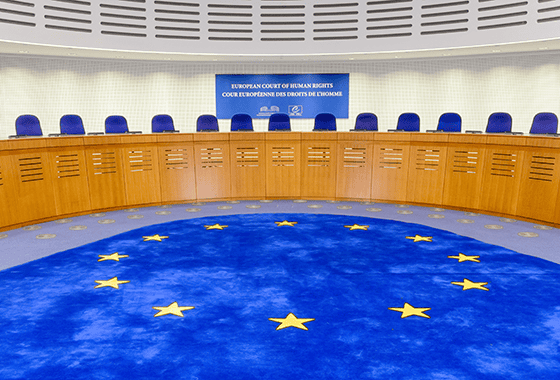
By Gordon Nardell QC
This 1½ hour webinar was the fifth and final session of the European Circuit’s Virtual Annual Conference 2020. The panel consisted of:
Gillian Cahill (Uría Menéndez, Madrid/Bar of Ireland)
Prof. Panos Koutrakos (City, University of London and Monckton Chambers)
Janet Whittaker (Clifford Chance, Washington DC)
Moderator: Gordon Nardell QC (Twenty Essex and Alphalex-Avocats)
SINCE March 2018 it has been nearly impossible to debate investor protection in Europe without placing the CJEU’s seminal judgment in Case C-284/16 Achmea front and centre. Achmea has in turn triggered far-reaching developments in European policy, culminating in the treaty signed by 23 Member States on 5 May 2020 providing for the termination of their intra-EU BITs. These events have generated no shortage of analysis in the European professional and academic space. The aim of this session was to take a different perspective, placing these developments in a global context, examining how they fit into the wider legal and policy setting of world trade and investment.
This note doesn’t attempt a complete account of the session: European Circuit members can find the full recording on our website at [link]. It highlights some of the key points made during the session and offers some takeaways and insights on this fascinating topic. Many of those attending the session are experts in their own right, and some of the points below reflect questions and comments from audience members, for which we are grateful.
The panel divided the topic into four segments:
- Setting the scene: the European timeline
- How we got here: BITs and international trade policy
- Back to Europe: the Termination Agreement and its likely consequences
- Panning out again: some blue sky thinking
1) Setting the scene: the European timeline
Gillian Cahill led this session and Panos Koutrakos offered comments.
- The Achmea judgment stunned many in the investment arbitration world, but seems less of a surprise when set against the evolution of EU trade policy.
- In the 1990s the EU, then an essentially Western European bloc, encouraged investment in the emerging market economies of Central and Eastern Europe. BITs were an instrument of that policy. But those States’ accession to the EU coincided with a proliferation of ISDS claims in the early 2000s, prompting concerns about two competing systems of investor protection – the BITS and EU law. The Commission increasingly filed amicus submissions in ISDS arbitrations. raising jurisdictional and substantive objections (including State aid objections). Respondent Member States began to adopt the Commission’s position. An early examples is the Eastern Sugar arbitration, and later the Micula
- That produced a stand-off between arbitral decisions and Commission policy. So Achmea was really an inflection point when a series of (arbitral) decisions in favour of intra-EU ISDS first met a (judicial) decision supporting the Commission position.
- From the standpoint of EU law, Achmea is a perfect fit with the architecture of CJEU decisions from 1991 onwards, eg. the opinions on the EEA Agreement, the Patent Court and accession to the ECHR, reflecting the Court’s protectiveness towards autonomy of the EU legal order and homogeneous interpretation of EU law. “Pockets” of parallel jurisdiction have consistently been regarded as threats to those principles – whether in relation to “internal” autonomy vis-à-vis the Member States/their courts, or external autonomy vis-à-vis outside entities. (These two types of autonomy were revisited later in the session)
- However, the CJEU performed a theoretical somersault in its CETA Opinion. The investment court provisions of CETA are the direct result of political/civil society pushback against ISDS, in parallel with the Commission’s legal pushback. So EU institutional policy favours this structure. The CJEU’s decision was therefore a pragmatic one, but one facilitated by the very careful drafting of CETA. The Court was able to rule in favour of CETA because of the novel construct of treating EU law as fact, so not creating a parallel jurisdiction on issues of law – hence not posing the same threat to the autonomy of EU law, internal or external.
- In Achmea the CJEU dealt only with the ISDS process, not the substantive BIT provisions. So we don’t have the Court’s views on current topics of debate such as the equivalence of legal protection between EU and BIT law
- The external dimension of autonomy has been under development since the 1990s, originally as an aspect of the supremacy of EU law – that is, its protection against external sources of law. However, investment law conflates a wide range of sources of law, including domestic constitutional law. So both elements of autonomy will be in play when the Court eventually comes to deal with the Termination Agreement.
2) The wider picture – BITs and international trade policy
Janet Whittaker led this session, with the other panellists contributing observations.
Scepticism about BITs and especially ISDS, in the US and elsewhere, has covered a range of issues:
- Does it really incentivise capital flows to developing countries, as intended?
- Does protection of property and contractual rights wrongly prioritise corporations over public needs? For example through “regulatory chill”?
- Asymmetry: lack of an equivalent mechanism for affected communities to pursue investors – a concern reinforced by the growing focus on sustainability, businesses’ human rights obligations, etc.
- Features of the process: “usual suspects” problem, lack of diversity in tribunals, etc.
In the US, major shift from strong advocate of ISDS to antipathy from both sides of the political aisle:
- FDI seen as promoting outsourcing of jobs at the expense of investment at home.
- Concerns are expressed about so-called private tribunals”, allegedly dominated by business interests, judging US laws, potentially enabling a foreign investor to force a change of domestic law/policy – an interesting counterpart to the EU “external autonomy” concern.
- US Trade Representative (2017-21) Robert Lighthizer suggested alternatives of dealing with investor protection State-to-State and/or including arbitration clauses in individual investment contracts.
- Chapter 14 of USMCA (US-Mexico-Canada Agreement) contains a scaled-down version of ISDS under NAFTA Chapter 11.
- Consistent with paradigm shift in US economic policy generally: under Trump presidency, US no longer prioritising protection of US investors’ economic interests overseas.
How do those themes play in Europe?
- Debate viewed through prism of EU Law: Commission policy underpinned by assumption that EU does everything necessary to protect intra-EU investment. Non-discrimination principle makes EU law nationality-blind, which BITs detract from – though levels of investor protection in EU may not be as homogeneous as that might imply.
- Internal market rules militate against economic nationalism internally, but not externally. Hence EU does not permit Member States to adopt equivalent of (candidate) Joe Biden’s “buy American” campaign (which essentially relates to Federal government procurement) but has no qualms about seeking opportunities to develop its economic capacity – especially in manufacturing and innovation – in its external trade relations.
- So divergence between what the EU does internally and externally. Especially visible in rhetoric on individual rights: commitment to strengthening individual rights in internal policy, but in international trade, support for depriving individuals (outside the EU) of rights enforceable in domestic and Union courts. The EU’s recent trade agreements exclude direct effect.
- Differences of tone between EU bodies: European Parliament v. vociferous on ISDS, eg in TTIP debate. Support for individual rights means rights of “little people” whose voice is overridden by trade agreements. Commission likely to take a different view; and may be nuanced differences within Commission, eg DG FSMA v DG Trade.
3) The Termination Agreement and its likely consequences
Panos led this segment, with contributions from the other panellists
Two complimentary themes in the Agreement: rupture and continuity.
Rupture esp. in the retroactive impact on extant arbitral awards that have not been executed; continuity because underpinned by the assumption that EU law provides adequate protection for investors. But the Agreement skews in favour of rupture for 4 reasons:
- The Agreement impacts on a v. broad range of proceedings, extending to a final (but unexecuted) arbitral award rendered pre-Achmea. The investor has acquired a specific, vested right with economic value, not just a contingent expectation. Principles of acquired rights, legitimate expectation, etc. in play.
- Retroactive termination of sunset clauses raises a serious question of compatibility with EU and international law. For instance, were intra-EU BITs intended to confer direct rights for the period laid down in the sunset clause? Investors will be tempted to test this.
- There are widely differing views on the effectiveness of the “alternative”, ie. investor protection under EU law. Eg the Commission’s 2018 Communication v. the more sceptical position of AG Wathelet in Achmea.
- Those principles likely to be tested in a wide range of fora: Member State courts, third State courts, arbitral tribunals. The results are hard to predict (see below). Member State courts further divide into home and host State courts, and courts with differing propensities to refer questions to the CJEU. With a wide range of sources of law to choose from, State courts may test the Termination Agreement against their own constitutional law. So ironically an attempt to protect the autonomy of EU law may achieve the opposite.
How are courts and arbitral tribunals likely to react to the Agreement? In particular, are arbitral tribunals more likely to decline jurisdiction on the basis of the Agreement than on the basis purely of Achmea?
- An open question given the complex range of issues in play. However, expect Member State courts to refer questions to the CJEU. Consensus was that domestic tribunals would find it difficult to resist a clear decision of the CJEU upholding the effectiveness of the Agreement. Even then, they may find room for manoeuvre on the basis of international law principles: eg. would Art 72 Vienna Convention on the Law of Treaties justify finding the impacts of termination effective only from the date of withdrawal from the BIT rather than the date of Achmea?
- Little guidance as to how courts outside the EU, esp in the US, would approach the Agreement. May be less inclined to follow EU policy, eg. US Court has enforced the Micula ICSID award in face of objections by Romania and the Commission based on Achmea. However, reasoning concerned whether EU law was applicable at the time of the measures in question – so door open to a different approach in future. Enforcement of a non-ICSID award under the New York Convention may face other arguments, eg. whether the retroactive aspect of the Agreement – including its impact on pending proceedings — would undermine an objection based on public policy under Article V.
- Complex issues likely to arise in relation to intra-EU BIT proceedings involving Member States who have not signed the Termination Agreement.
- One area where divergence likely between different fora is validity of retrospective termination of sunset clauses. On one view, investors have simply got what they bargained for: they would appreciate that contracting States were always free to terminate their treaties, including the sunset clauses, at any time. Arbitral tribunals and third State courts have no duty of sincere cooperation, unlike EU domestic courts. The various sunset clauses are not homogenous, so room for treaty-specific and context-specific arguments.
4) Looking to the future – where is investor protection heading in Europe and globally?
All the panellists contributed to this segment.
How does ISDS fit into current trends in economic and trade policy?
- A number of reasons why cross-border investment flows are becoming a lesser priority. Trade wars/friction (eg US/China); even under a US Biden presidency, “Build back better” will prioritise domestic investment; Chinese outbound investment has fallen sharply over past 5 years; and demands for “re-shoring” of jobs post-Covid. That might continue over medium term.
- EU is committed to the MIC project. US unlikely to die in a ditch for the arbitration model. US attitude may depend on who controls Congress after election, but support for ISDS is not a certainty. US has declined to express a view in the context of a possible US-UK FTA.
Is there a specifically European debate, or is it simply a European flavour to a global debate?
- Assumptions underlying EU policy likely to be increasingly undermined. idea of EU law as a complete system of rules and remedies accessible through domestic courts observing the rule of law has been undermined by acknowledged problems eg. with Poland.
- The fact that the Commission has recently consulted on investor protection rules post Achmea casts doubt on rhetoric that existing EU rules provide “complete protection” and is almost a concession that levels of protection are not uniform throughout the Union
- The US concern about treating overseas corporations more favourably than domestic individuals/communities might have an analogue in the EU in arguments about discrimination. It’s well established that Treaty non-discrimination principles don’t apply externally, but CJEU’s silence on the discrimination point in Achmea leaves open its internal operation. May raise interesting issues eg. with Member States who have not terminated their BITs.
- Overall, European developments are a variation on those in other countries/regions rather than something unique. The debate is at root about how to encourage investment while maintaining protection for individuals/domestic businesses and State “public interest” powers. Same debate taking place in different language internationally – in Asia, Australia etc as well as Europe and US.
A new EU Investor protection instrument?
- A new instrument, eg. a new Investor Protection Regulation, may help promote homogeneous standards.
- Differing standards of rule of law are a problem in other systems too. Eg under USMCA – certain kinds of NAFTA proceedings were not available in the Canadian system.
- Lack of consensus among Member States (reflected in dissent from Termination Agreement) probably an obstacle to agreement on a significant change. Differences already apparent eg. on Energy Charter Treaty reform: Germany suggesting replacement of arbitration with an investment court. Next wave of CJEU jurisprudence likely to relate to ECT. The Court’s acceptance of the CETA court mechanism provides a common starting point.
Some closing takeaway thoughts:
- Current developments reveal little global consensus on these issues – eg the UNCITRAL panels, debate about a MIC v ISDS, WTO appellate body, etc. So hard to know whether States will eventually coalesce around a single option, or will limp on with web of BITs plus a European mechanism across several trade/investment agreements.
- Brexit: the Withdrawal Agreement and draft future partnership texts envisage an arbitral mechanism with reference up to the CJEU whose ruling is applied by the tribunal. Does that infringe Achmea? Could these agreements be unpicked in future?
- Some Member State courts already emboldened to challenge autonomy of EU law – eg the German ECB saga. May be an indication of judicial attitudes to Termination Agreement.




